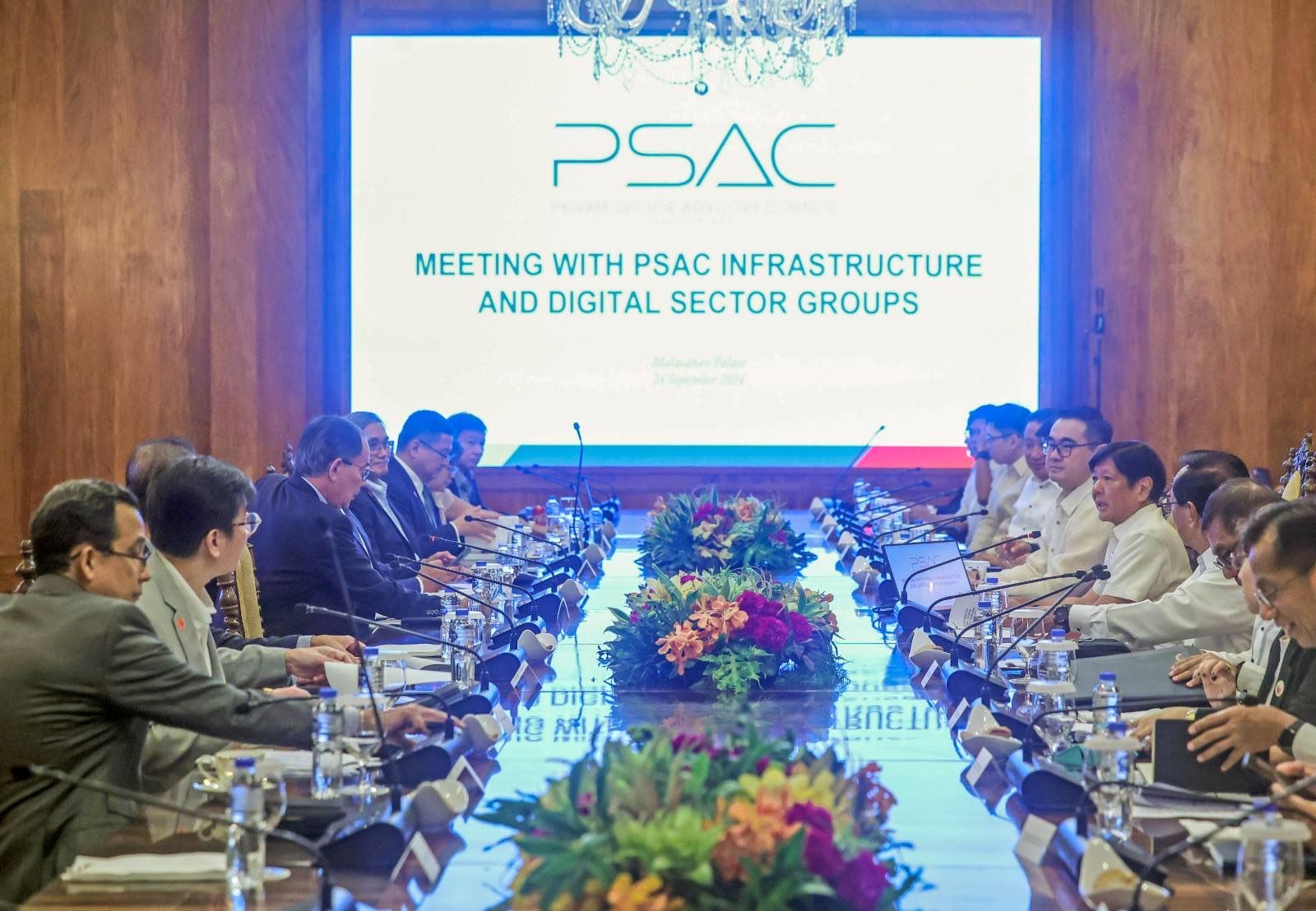Gov't identifies measures to address flooding
At A Glance
- Meanwhile, the PSAC also tackled the construction of common towers in geographically isolated and disadvantaged areas.
President Marcos suggested that building higher flood walls was among other measures that could help mitigate flooding in Metro Manila and other flood-prone areas, the Presidential Communications Office (PCO) reported.

Marcos said this in a meeting with the Private Sector Advisory Council (PSAC) - Infrastructure and Digital Infrastructure Sector Groups and other concerned agencies in Malacañan on Tuesday, Sept. 24.
According to the PCO, the President thought "building higher flood walls can do the trick," as well as implementing an aggressive reforestation program, saying the government's reforestation efforts to control flooding "are not enough."
He added that addressing the garbage problem through waste-to-energy initiatives is another measure. Marcos blamed the amount of garbage clogging flood control projects as the cause of the recent flooding in Metro Manila and nearby provinces.
"The capacity of the government’s flood control system has decreased because of the rising population in the country," Marcos said.
"All garbage ends up in waterways, making pumping stations fail," he added. "The watershed areas eventually suffer due to irresponsible garbage disposal."
PSAC’s flood mitigation recommendations include the construction of retarding basins and dams along critical waterways, enacting ordinances that require property developers to install rainwater detention systems, and enforcing easement laws to clear floodways of obstructions, including informal settlements. Coconut-based garbage traps for barangays will be implemented to prevent drainage blockages.
Additionally, PSAC urges comprehensive planning for critical waterways and bridges affecting major roads like EDSA and Roxas Blvd. To further support flood management, LGUs are encouraged to collaborate on a unified approach and invest in waste-to-energy projects through public-private partnerships (PPP).
The Napindan River will also be dredged to improve the outflow of Laguna de Bay. The Water Resources Management Office (WRMO), in collaboration with the Philippine Disaster Resilience Foundation (PDRF), will oversee these initiatives.
For long-term flood control, the PSAC recommended implementing a river basin master plan, including the widening of the Manggahan Floodway and launching a nationwide watershed restoration program, particularly in priority areas like Marikina. Reforestation efforts will be essential for environmental recovery.
The PSAC likewise suggested revisiting the Parañaque Spillway project and constructing a flood diversion tunnel from the Upper Marikina River to the Pacific Ocean. To streamline efforts, PSAC expressed support for consolidating water and drainage management under the proposed Department of Water Resources.
Early this month, President Marcos suggested the flooding may have been caused by blocked waterways due to urbanization, particularly the increasing number of housing projects.
With this, he raised the importance of updating the country's flood hazard maps and seeking new strategies to address flooding.
"What we're going to have to do here is we're going to have to really look and see what are the changes that have happened," he said.
Connectivity
Meanwhile, the PSAC also tackled the construction of common towers in geographically isolated and disadvantaged areas (GIDAs).
According to the President, the PSAC's recommendation to expand internet access is vital for better connectivity and services in the farthest reaches of the country.
"Together with our private sector partners, we are building a future where every Filipino from every corner of the Philippines is connected and empowered to succeed," he said.
According to the PSAC, which is leading efforts to expand mobile network coverage, over 25 million Filipinos in GIDAs lack adequate digital infrastructure. It is targeting to build 100 new mobile towers by July 2025, providing coverage to 100 barangays and Department of Education (DepEd) schools, with 500,000 Filipinos gaining free internet access through the BBM Internet Promo.
To expedite the rollout, PSAC recommended simplifying the permitting process by adopting unified LGU forms. Legislative reforms such as institutionalizing the Center for AI Research (CAIR) and creating an open, secure API ecosystem are also pivotal for fostering digital innovation.
According to the PSAC, digital connectivity should be recognized as a basic human right, ensuring that telco facilities are exempt from lease fees and that buildings are equipped with connectivity before occupancy.
"These recommendations are critical for strengthening the nation’s digital infrastructure and promoting inclusive growth, particularly in underserved communities," it said.